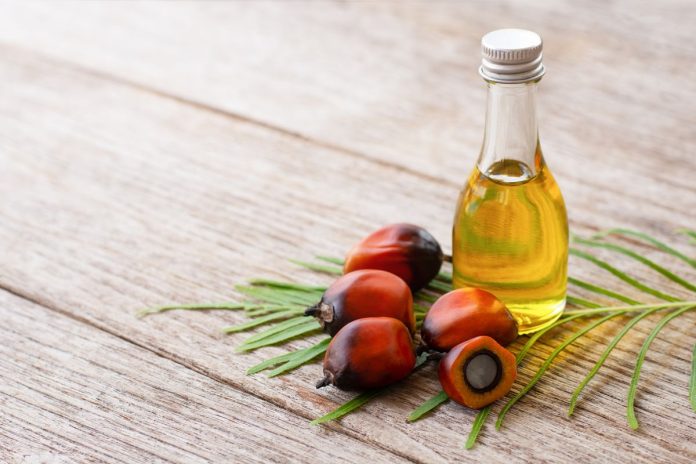Palm oil is the most consumed vegetable oil in the world. It is in half of all supermarket products like shampoo, lipistic, body lotion and packaged foods. Palm oil is used in animal feed and biofuels etc.
palm oil is an attractive ingredient due to its texture, taste, odour and shelf life. That makes palm oil exporter countries like Indonesia and Malaysia the key players in emerging markets. Those two countries are the biggest palm oil exporters.
But others in Africa, Asia and Latin America are stepping in as producers and consumers. As global demand grows, palm oil is the driver of trade, employment and industrial growth in developing economies.
Why Palm Oil Matters to Emerging Economies?
Palm oil is a high-yielding crop. That means it produces more oil per hectare than any other oilseed crop. This makes it attractive for nations with limited arable land but plenty of labor.
For many emerging countries, becoming a major palm oil player can generate income, reduce poverty and increase foreign exchange earnings. According to APEDA, India is one of the largest palm oil importers.
Demand is driven by the food and hospitality sectors. As local demand rises, exporters are eyeing partnerships with importers across Asia, the Middle East and Africa.
How Palm Oil Export Shapes Trade and Development
The export of palm oil is reshaping economies in several ways.
Trade Growth and Infrastructure Development
Countries like Indonesia have invested heavily in ports, refineries and processing units dedicated to palm oil. That’s created jobs and boosted infrastructure. Nigeria, Ghana and Papua New Guinea are following similar trends.
Employment Generation
The palm oil industry employs millions worldwide. From farm workers to processing unit operators, the sector supports rural livelihoods and reduces urban migration.
Strengthening Bilateral Ties
Palm oil trade is influencing trade agreements between emerging economies and larger nations. India’s trade with Malaysia and Indonesia, for example, involves large palm oil deals. That makes these partnerships both politically and economically strategic.
Opportunities for Smallholders
In many regions, small farmers are supported by government schemes to grow oil palm. That helps them become part of the global supply chain and benefit from stable income.
For importers, this trade offers access to an affordable, versatile and scalable oil option that can be used in multiple industries—from processed foods to soap manufacturing.
Global Demand Trends: The Numbers
- In the year 2023 Global palm oil market was valued at 71.23 billion dollars. It is expected to reach 103.6 Billion by 2032,, growing at 4.25% each year.
- India’s palm oil consumption is expected to grow at 6% annually between 2023 and 2027.
- Nigeria and Thailand are emerging as new palm oil exporting countries along with traditional biggies like Indonesia.
This is an open window for trade players—especially those who can offer competitive pricing, certifications and reliable supply chain.
What Palm Oil Importers Look For
Whether you are sourcing in bulk or for retail packaging, palm oil importers look for:
- Consistent quality with FFA (Free Fatty Acid) levels below standard limits.
- Certifications like RSPO (Roundtable on Sustainable Palm Oil) to ensure ethical sourcing.
- Sustainable farming practices that minimize environmental damage.
- On time delivery and scalable logistics support.
Suppliers who can meet these expectations will have consistent demand in countries like India, Bangladesh, Pakistan, Kenya and UAE.
How to Succeed as a Palm Oil Exporter
Want to become a successful palm oil exporter? Here are a few quick tips:
- Get certified: Get FSSAI, RSPO and ISO certified for global acceptance.
- Be transparent: Be open about your production and sourcing.
- Use B2B platforms: Use Tradologie to connect directly with genuine palm oil importers without any middlemen.
- Pack smart: Use food-grade, leak-proof bulk packaging for long distance shipping.
- Know buyer needs: Each country has its own regulations, standards and consumer preferences. By researching and analyzing these requirements, exporters can tailor their offerings – whether in packaging, certifications or product specifications – to meet market expectations and build stronger relationships.
Conclusion
The palm oil trade has moved beyond supply and demand. Today it shapes national economies, supports rural communities and drives growth across various sectors – food, cosmetics, biofuels and pharmaceuticals.
For palm oil exporters this is the time to step up and align with international quality, traceability and sustainability standards. Doing so opens doors to premium markets and builds long term trust with partners and consumers.
Importers especially in developing countries are looking for reliable suppliers who can deliver volume without compromising on environmental and ethical practices.
As sustainability becomes the focus, the demand for certified responsible palm oil is growing. Exporters who invest in sustainability now will be better positioned to lead the industry, build global partnerships and have a resilient profitable future.
Want to export palm oil directly to global buyers without middlemen or hidden charges?
Tradologie helps you connect with verified palm oil importers across 100+ countries. Negotiate in real time, get the best rates and grow your business with complete transparency. Sign up today and take your palm oil business global.














